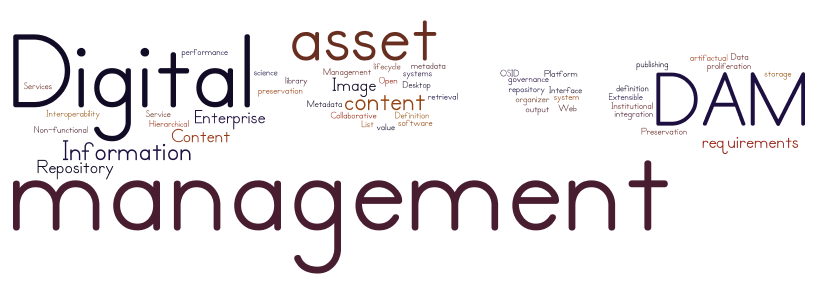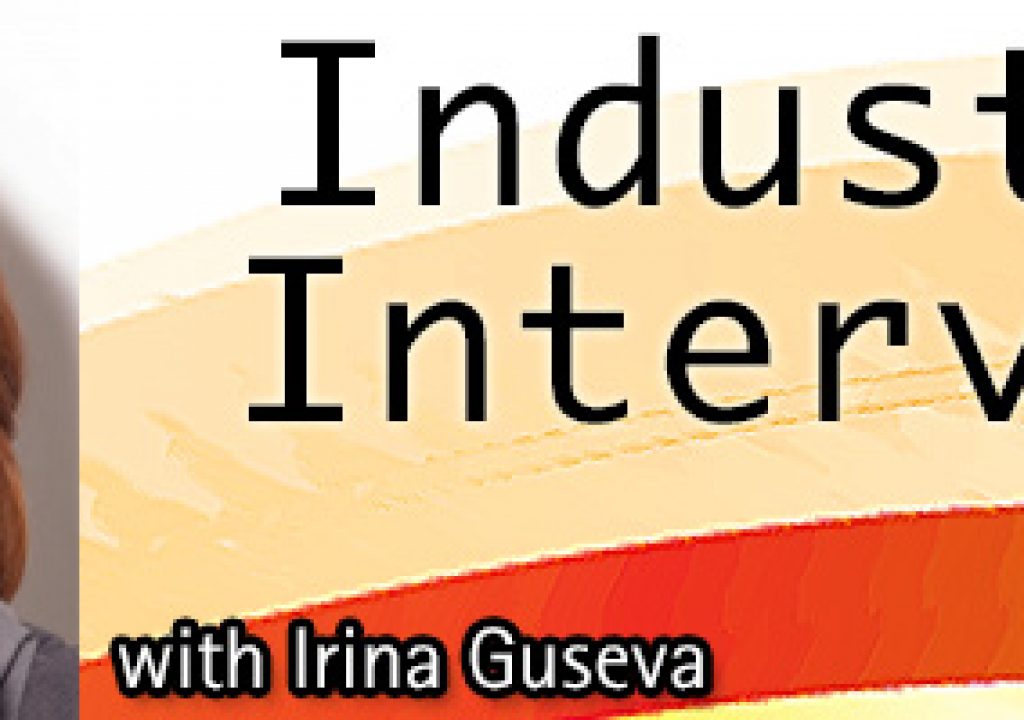
Rather than focusing on specific experts or organizations, DAM Coalition is a platform that gives professionals across the industry the ability to showcase their thoughts, experiences and knowledge with the community in a variety of ways. As such, we’re talking with those professionals about how they’ve seen digital asset management evolve and what they’re preparing for as they watch things change for people on every side of the industry.
Irina Guseva is one of the professionals who has seen and continues to experience these changes. As an independent DAM consultant, she focuses on enterprise software, including procurement, implementation best practices, and strategy. She has more than 15 years of experience in technologies such as DAM, MAM, WCM and CEM. We talked with her about her career, what sort of challenges she’s seen people face when it comes to selecting a DAM system and what she’d really like to see from more DAM vendors.
DAM Coalition: Tell us about your history in digital asset management. How did you get involved with DAM?
Irina Guseva: When I became a journalist at the tender age of 12 (when I published my first piece in a local newspaper), I didn’t know that technology, including DAM, would always walk parallel to my other professional activities in life. I’ve worked in print, radio, TV, and then, of course, online media. Probably unlike others, my entry into the DAM world was in fact through the Media Asset Management (MAM) door — a neighboring to DAM discipline where you deal mostly with broadcast type media assets.
Since then I implemented or managed implementations of DAM systems, researched and analyzed the DAM market, and helped my clients make educated decisions in either selecting an enterprise DAM system that’s appropriate to their needs, or devising a DAM strategy.
How have you seen things change in the industry since your career started?
DAM is one of the most fascinating and actively evolving segments of the technology marketplace. From the evolutionary perspective, we came a long way from simple photo libraries that were aimed at agencies and photographers to the modern-day intricate (and complex) integrated environments of marketing resource management, digital marketing and DAM — as part of the overarching Customer Experience Management mantra.
Do you think industry veterans and even newcomers have a realistic expectation of what the right DAM system can do for an organization?
I think we all can lose touch with reality at times. It doesn’t really matter if you’re a DAM veteran or a newbie, there are often other major forces that play into any DAM decision. And I am pretty sure that DAM veterans, who’ve spent more time in the industry than I, have seen it all. As with any enterprise technology, change management is always a big and painful issue that organizations need to address. I find DAM to be particularly sensitive, as it often involves creative assets and creative workers, who have a certain attachment to their art.
Also, DAM (and this is unfortunate) is not always seen as a centerpiece for even the most asset-centric organizations, as it is at times difficult to prove ROI, and other hard and soft benefits, and get the executive support needed in times of DAM changes. And finally, all too often, the expectations are not entirely realistic due to the lack of deep understanding of what the difference DAM tools can and, most importantly, cannot do. This is a number one culprit in DAM technology selection rejects, for example, where organizations may be looking at the entirely inappropriate short list of vendors.

“DAM” is just one of the many acronyms that people use, sometimes interchangeably with others (PAM, MAM, ECM, EIM, CEM, etc…). Do you think we should still be saying “DAM” when we want to talk about the management and decisions surrounding the ingestion, cataloguing, storage, retrieval and distribution of digital assets? Or is it a moot point?
The industry acronym soup can indeed cause a certain amount of headache and make the already confusing world of technologies even more complex. However, I am biased here, as acronyms are my passion and my professional focus : ) I also do believe that DAM — along with MAM, ECM, CEM, WCM, and others — has its place and value. There are important technical and functional differentiators between MAMs and DAMs, for example.
Again, back to my point before of looking at the wrong vendors when you’re compiling your short list. If you do a lot of video (and that’s up for further definition of what exactly is “a lot”), you probably should be looking more at MAM and less at DAM. If you’re looking to manage fairly small amounts of images, you may be able to do that in your WCM and not need a DAM. In general, I think acronyms are useful, so long as they’re not misunderstood and abused.
How have technological developments affected DAM systems and people’s expectations of their DAM system?
In the modern-day era of Customer Experience Management, and all the fancy ideas and strategies that go along with it, I think more and more people expect more and more of DAM. There’s a lot going on in the world of DAM and adjacent tools from the technological perspective. Can DAM act as a customer service repository and manage product brochures and manuals, and be integrated with our campaign management tool, and gather sentiment analysis data that is part of an asset metadata; and be integrated with our ERP, WCM, PIM systems — and all of that global, in 35 languages, in the cloud and without any effort for implementation/customization or compromised end-user usability? While it is good to have expectations of your technology, you just need to be realistic about what’s important and what’s not so much for your organization, and what is the best tool (or a set of truly integrated tools) to get you to your business goals.
It wasn’t so long ago that job titles like “Digital Asset Strategist” were unheard of in an organization. Do you think we’ll see more positions and titles created for the people who are dealing with DAM, or is it going to be more about refining and redefining the roles that currently exist?
To be honest, human resources for DAM projects is one of the areas of needed improvement in almost all organizations. All too often some organizations rely on technology too much, thinking that software will fix all their issues. In reality, it is the people who can make the needed change, but not without the right technological tools in place. I certainly hope that more organizations will look into adding DAM-specific functions, if DAM is a business-critical application in their stack. Just like many organizations took some time to see the value of a “Content Strategist” role, DAM managers are also not always recognized as necessary functions. A DAM Strategist is an even more complex role.
What’s an issue that you see come up over and over for people when they’re dealing with their DAM?
As with many cases when it comes to complex enterprise technology projects, the issues are plentiful and range from selecting the wrong tool for the wrong job, to underestimating the power of change management, to doing the implementation in such a way that it doesn’t foster future growth, to understaffing DAM projects. The list can go on and on. There are many companies that are well prepared for the DAM journey. There are also companies that have extensive DAM knowledge and expertise behind their belts. And all that helps.
If I could give only one piece of advice to “people dealing with DAM,” I would say invest time in doing homework and planning. In the long run, this will save you a considerable amount of money.
Selecting a DAM system is something that you’ve dealt with for awhile now, so what are some of the things buyers can and should be looking for in a DAM system?
Prospective buyers of DAM systems, as well as those looking to replace their current (ill-functioning, usually) DAM system should be looking for whatever will make them feel comfortable with the new DAM system. As vague as the initial answer is, I said that because I truly believe that every organization is different and has unique challenges — despite some commonality across a vertical it may belong to, such as pharma, media, manufacturing, consumer products, etc. In today’s DAM marketplace, there’s certain commoditization of DAM features and functions, so it really comes to finding that perfect fit for you: technologically, culturally, financially.
What does next generation of DAM look like?
Oh, my crystal ball took a vacation, he thought it was too early in the year for predictions : )
DAM is one of the comparatively fast-moving industries. There’s a lot of evolution going on in the majority of DAM players’ offerings. I think we will be seeing more focus on video, and on various integrations (that should really be taking shape of more pre-packaged modules that do not inflict so much pain on their end users and implementers), especially on the digital marketing and Customer Experience Management sides.
And more vendors should really start looking at open standards and interoperability in DAM — but that’s more of a wish, than a prediction.

Filmtools
Filmmakers go-to destination for pre-production, production & post production equipment!
Shop Now













